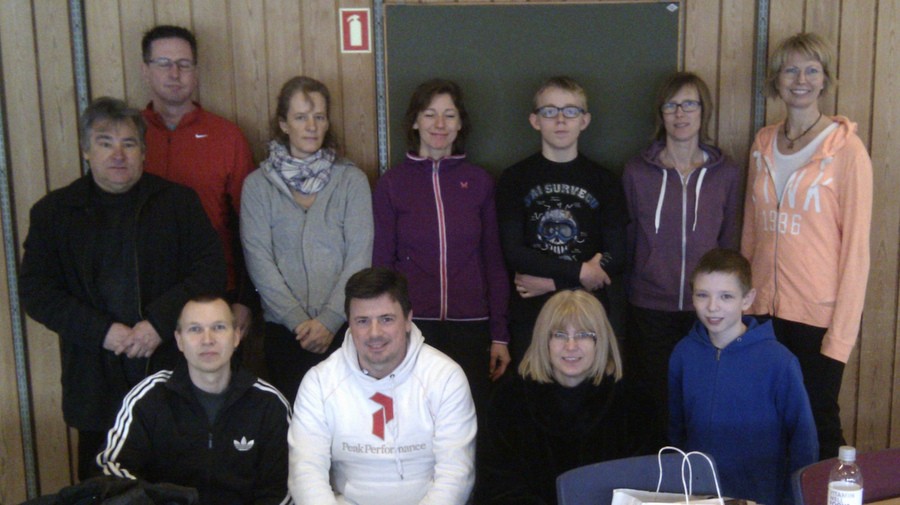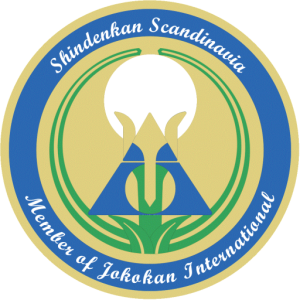
By Martin E. Hansen, Member until 2018
On a cold January morning, 13 participants had chosen to attend Shindenkan's Ki and Meditations 1 course at Tjørnelyskolen in Greve. Traditionally, this course has been held in January, as January is one of those months with little daylight, when people already tend to go a little into themselves, or maybe even on the verge of a winter depression. Here it is good to have a tool to help oneself from within, which can be used to analyze or focus on the thoughts and problems that cause stress and rush in everyday life. Kimu Sensei is a grandmaster in martial arts, but also in Ki and meditation. In fact he got his densho Menkyo in Ki and Meditation before he became Menkyo in martial arts and this at a very very young age compared to contemporary and western standards, but at an appropriate time (As he himself likes to say it) according to the koryo martial arts standard 🙂 Kimu Sensei therefore saw at a very young age the common thread in ki and meditation, following which he has created a unique course, which is now offered in Shindenkan as an inspirational curriculum course, i.e. a course that is open to others than just Shindenkaners, eg families, friends, support, sponsors, etc. At the same time, Kimu Sensei has managed to create a course that gives a Western approach to a discipline that is most often associated with the East. Martin Renshi had the great honor of passing on the competence to the best of his ability to the 13 participants.
The Ki and Meditations course, like all other Shindenkan courses, is a Ryugi and Ryuha course, i.e. there is both a theoretical part and a practical part. So the participants could look forward to a good 3.5 hours with both power point slides, dialogue but also practical exercises when they were presented with the agenda. Martin Renshi asked about the expectations for the day and most agreed that they would like to understand what this Ki and meditation is and how they could use it in their daily life. The participants were also told in advance that Ki and Meditation is one of Shindenkan's more controversial courses, as it gets close to one's self, just as the Instructor courses also do - especially Instructor course 1.
During the next few hours, the participants got the basic and essential knowledge about meditation, i.e. answers to a lot of questions, what is meditation?, how did it come about?, how is it used?, what do you get out of it? It was not just a presentation, but also a dialogue which in some cases got "close to" the participants and individual video clips were also included. The approach to the subject contained both the Eastern but also the purely scientific, i.e. what can be proven? Can it be measured? Etc. The participants also listened with interest when the connection to Shindenkan, martial arts and martial arts was presented, where they could see and understand how and why the level of martial arts to martial arts goes hand in hand with the ability to master and understand Meditation.
Ki is for many also an inexplicable subject, phenomenon, ability? Here, too, the participants got an introduction and the basic essential knowledge spiced up with a little film, which set the curiosity but also the wonder in motion. The explanation of what Ki is, how it is used, why it is there? and other questions gave them an answer that they related both to their everyday life, what they had learned through life, but also to themselves.
When the two concepts were stitched together, the participants curiously leaned forward a little further in their chairs and listened to how this connection is actively used in Shindenkan and from martial arts to martial arts. They could relate to the connection regardless of whether they had been training for a long time or just started a while ago and could see elements that they knew from daily training. It also gave an insight into the common thread that Kimu Sensei has created in the curriculum, where there are no coincidences, e.g. the connection between Tai-Chi, Ki & Meditation and the Shiatsu training.
One is theory, another is practice and eventually the participants could use a break as a prelude to a series of exercises. Here, both breathing was trained, i.e. how to use your breath optimally, which is quite essential both for martial arts but also for life as a whole, where correct breathing has a positive effect on the body. To give the participants a feel for the concept of ki, they also played a little with kinesiology, which in a humorous way showed the participants what happens when you influence the energy circuit and thus the ki in the human body, which turned out to have a quite natural and logical explanation.
After the practical exercises, the participants got an introduction to several of the alternative concepts you come across in connection with Ki and meditation, if you e.g. searching the Internet and other places. These are concepts such as Chakra, Kundalini, meridians, etc. When you get an explanation, things are often not as mysterious as you think they are, and you could sense from the participants that they were quite satisfied with getting a logical and natural explanation of the topics .
The last part of the course was devoted to "pure" meditation exercises. The starting point was the same for all exercises, but with different focuses and based on the correct breathing. At first it was all about finding this breath and physically feeling it throughout the meditation. Subsequently, it became a more "free" meditation with an open mind, but still with correct breathing. Finally, the participants were guided by Martin Renshi, through a mindfulness-inspired meditation developed by Kimu Sensei. It came as a surprise to many that this last meditation lasted approx. 15 min., when they only felt they had been "away" for quite a few minutes. Some also think it was easier to be guided, which is the case with many things in life. But you can ask yourself the question if you relate to other aspects of life in this way? do I prefer to be guided or do I want to take responsibility for myself? and my actions?
It was a bunch of satisfied and energetic participants who left Tjørnelyskolen at noon. They were both hungry for lunch, but also to get home and explore the new tool, which will hopefully give them many good experiences, discoveries and self-insight in the future. For several of the participants, it was also not the last time they had to attend Ki and Meditation Course 1. Kimu Sensei has designed these curriculum inspiration courses in such a way that when you gain a higher level and insight, you can also get another benefit from the courses, which is why there are many who take the inspiration courses several times on their journey with Shindenkan.




